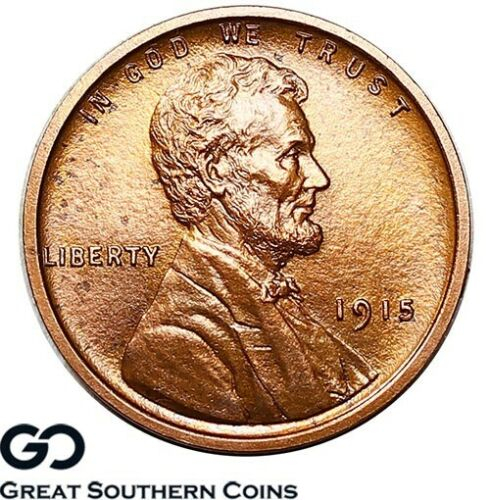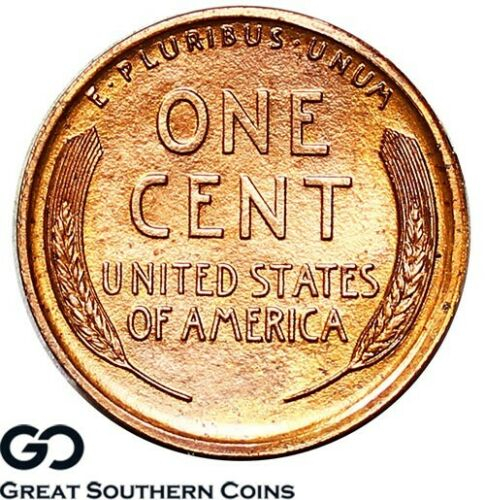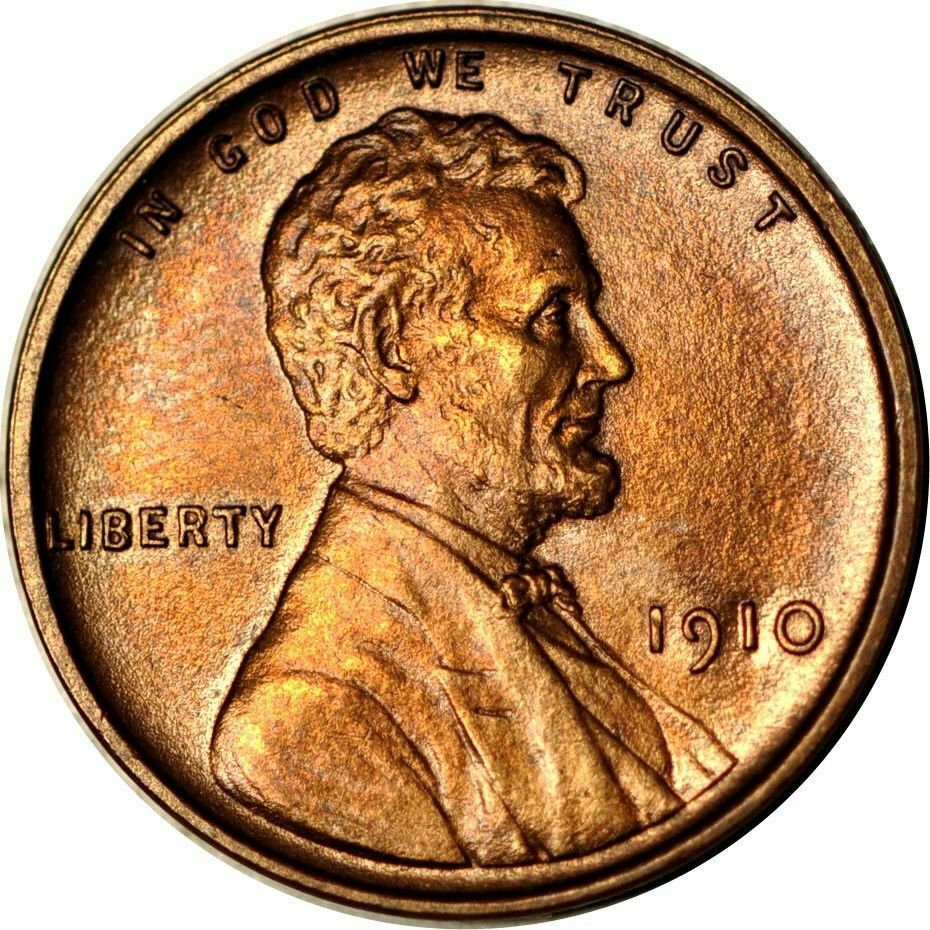In terms of preservation, there is a tiny hit on the upper jaw and another one just above the eyebrow, which you'd need a magnifying glass to see. Ditto re a few minor carbon flecks on the upper obverse. Surfaces are as clean, and in some cases, cleaner than I've seen on many later date Wheat Back Lincolns in MS 66 holders.
The above said, the color looks off to me. It could be the image; maybe not. I'd have to actually see the coin. The cynic in me says that's why the coin was bought, and still is, raw. A RD or RB copper doesn't typically look like that.
"Vou invadir o Nordeste, "Seu cabra da peste, "Sou Mangueira......."
Humor me by making the following not-ridiculous assumptions:
The coin is a proof
It has been 'lightly' conserved -- e.g., verdigris has been removed from around the "O" in ONE and perhaps other places
This conservation will likely prevent it from being slabbed
However, it has not been more seriously manipulated
Under these assumptions, isn't the seller's asking price fairly plausible? It's a pretty nice coin.
@Higashiyama said:
Humor me by making the following not-ridiculous assumptions:
The coin is a proof
It has been 'lightly' conserved -- e.g., verdigris has been removed from around the "O" in ONE and perhaps other places
This conservation will likely prevent it from being slabbed
However, it has not been more seriously manipulated
Under these assumptions, isn't the seller's asking price fairly plausible? It's a pretty nice coin.
And if we make the assumption that it is NOT A PROOF---which indeed it is a business strike--then how of the sellers asking price?
@BUFFNIXX GSC is a HUGE eBay seller of RAW coins........I have always suspected that they are the secret eBay entity of a Major Texas auction house. They must own uncirc rolls of RAW 1909-SVDB cents, as well as other keys. Definitely not a B&M.
@Higashiyama said: @MFeld asked "Does the knowledge level of the seller make any difference to you?"
Yes, definitely. Knowledge and integrity.
Knowledge level and integrity make a difference to me, too. In this case, I’m under the impression that the seller studies, is well versed and buys/sells matte proof cents and nickels. So it concerns me that the coin is listed as an uncertified Proof.
Mark Feld* of Heritage Auctions*Unless otherwise noted, my posts here represent my personal opinions.
Although I am operating at the limits of my expertise(!), my gut feeling is that it is a proof that has been conserved. The likely conservation should be obvious in hand. From that perspective, if the seller knew more about the history, and were willing to be frank in describing it, I would be much more likely to buy it at $ 400.
@Higashiyama said:
Although I am operating at the limits of my expertise(!)
As am I, which is why I'm asking questions. I tried (admittedly, not an exhaustive search) to locate the die markers for a proof of this date and did not find anything that convinced me that the coin is a proof. That's certainly not conclusive, but still...
Not just that, after buying coins from them i've NEVER gotten any that look like the photo. Coupled with some "questionable" bidding, I'd 100% never trust their word for anything. At all, period.
@Azurescens said:
Not just that, after buying coins from them i've NEVER gotten any that look like the photo. Coupled with some "questionable" bidding, I'd 100% never trust their word for anything. At all, period.
For a few years they did not know how to differentiate between a matte proof and a business strike buffalo nickel.
I was able to get a couple of nice proofs off of them for little money. So it can work both ways.
Collector of Buffalo Nickels and other 20th century United States Coinage a.k.a "The BUFFINATOR"
@Azurescens said:
Not just that, after buying coins from them i've NEVER gotten any that look like the photo. Coupled with some "questionable" bidding, I'd 100% never trust their word for anything. At all, period.
For a few years they did not know how to differentiate between a matte proof and a business strike buffalo nickel.
I was able to get a couple of nice proofs off of them for little money. So it can work both ways.
That's what I said-"These people can't tell a proof from a circulation strike and vice-versa." I don't claim to be an expert in matte proof coinage but I, too, have cherried a few MP as business strikes. And also a couple of 1936 satin proof Buffs as well.
Comments
Not by me.
a.k.a "The BUFFINATOR"
Why not?
Mark Feld* of Heritage Auctions*Unless otherwise noted, my posts here represent my personal opinions.
In terms of preservation, there is a tiny hit on the upper jaw and another one just above the eyebrow, which you'd need a magnifying glass to see. Ditto re a few minor carbon flecks on the upper obverse. Surfaces are as clean, and in some cases, cleaner than I've seen on many later date Wheat Back Lincolns in MS 66 holders.
The above said, the color looks off to me. It could be the image; maybe not. I'd have to actually see the coin. The cynic in me says that's why the coin was bought, and still is, raw. A RD or RB copper doesn't typically look like that.
"Seu cabra da peste,
"Sou Mangueira......."
Humor me by making the following not-ridiculous assumptions:
The coin is a proof
It has been 'lightly' conserved -- e.g., verdigris has been removed from around the "O" in ONE and perhaps other places
This conservation will likely prevent it from being slabbed
However, it has not been more seriously manipulated
Under these assumptions, isn't the seller's asking price fairly plausible? It's a pretty nice coin.
Recent eBay sales:
NGC 62- $420
ANACS 63- $460
Raw- $250, $275
Asking price of $400 appears to be fairly plausible for a certified coin, sure. For a raw coin?
The comparables are definitely useful and interesting.
If we are to believe the photos (and my hypothesis about the light conservation), the OP's coin is arguably nicer than the recent ebay sales.
I would agree. Nice enough to pay slabbed money for a raw coin?
And if we make the assumption that it is NOT A PROOF---which indeed it is a business strike--then how of the sellers asking price?
Knowledge is the enemy of fear
Here is one described as “superb gem matte proof” on eBay right now. checkout the rims on this one.


a.k.a "The BUFFINATOR"
People can describe their coins any way they like on eBay. Do you think this seller is one to be emulated?
@cohodk
Yes, the assumption that it’s a proof is an essential one.
The seller does accept returns.
After this somewhat long but useful thread, I’m almost tempted to buy it myself!
Does the knowledge level of the seller make any difference to you?
Mark Feld* of Heritage Auctions*Unless otherwise noted, my posts here represent my personal opinions.
@BUFFNIXX GSC is a HUGE eBay seller of RAW coins........I have always suspected that they are the secret eBay entity of a Major Texas auction house. They must own uncirc rolls of RAW 1909-SVDB cents, as well as other keys. Definitely not a B&M.
OINK
@MFeld asked "Does the knowledge level of the seller make any difference to you?"
Yes, definitely. Knowledge and integrity.
@Higashiyama- do you think the coin is a choice RB proof? And going with your assumption, would it be okay to not mention light conservation?
Knowledge level and integrity make a difference to me, too. In this case, I’m under the impression that the seller studies, is well versed and buys/sells matte proof cents and nickels. So it concerns me that the coin is listed as an uncertified Proof.
Mark Feld* of Heritage Auctions*Unless otherwise noted, my posts here represent my personal opinions.
@MasonG
Although I am operating at the limits of my expertise(!), my gut feeling is that it is a proof that has been conserved. The likely conservation should be obvious in hand. From that perspective, if the seller knew more about the history, and were willing to be frank in describing it, I would be much more likely to buy it at $ 400.
I think the obverse was struck with used proof dies, the reverse with MS dies. So, maybe it will qualify to be the new MS PL?
OINK
As am I, which is why I'm asking questions. I tried (admittedly, not an exhaustive search) to locate the die markers for a proof of this date and did not find anything that convinced me that the coin is a proof. That's certainly not conclusive, but still...
By the way, two perhaps naive reasons I think it is a proof:
Although photos do lie, and lighting/shading make comparisons difficult, here is a comparison of the ears of OP's coin and an MS67+.
Proof dies have been used for circulation strikes. Did that happen in 1910?
These people can't tell a proof from a circulation strike and vice-versa, as some here know. I wouldn't trust any attribution they may claim.
Not just that, after buying coins from them i've NEVER gotten any that look like the photo. Coupled with some "questionable" bidding, I'd 100% never trust their word for anything. At all, period.
For a few years they did not know how to differentiate between a matte proof and a business strike buffalo nickel.
I was able to get a couple of nice proofs off of them for little money. So it can work both ways.
a.k.a "The BUFFINATOR"
@BUFFNIXX
Can you address the question as to why you’re convinced that your 1910 cent is a proof? Quite a few knowledgeable people posting here have doubts!
That's what I said-"These people can't tell a proof from a circulation strike and vice-versa." I don't claim to be an expert in matte proof coinage but I, too, have cherried a few MP as business strikes. And also a couple of 1936 satin proof Buffs as well.
Well the auction on eBay ended and it did not sell. Had 199 views and 9 watchers though.

a.k.a "The BUFFINATOR"
I'm at MS65RB. Nice coin.
I can’t grade it because no experience with Lincoln it almost looks cleaned to me. It’s beautiful but not able to grade pennies yet
Best place to buy !
Bronze Associate member
No